 Washington Trails
Association
Washington Trails
Association
Trails for everyone, forever
Here are (more than) 26 things that are special about hiking in Washington.
Everyone knows that Washington is a great place to go hiking. What makes it special? Let us count alphabetize the ways.
Alpine lake: A lake at high elevation, many of which are various shades of blue and green due to being particularly clear of silt or glacial runoff. Washington has so many that a nearly-400,000-acre region of the Central Cascades is known as the Alpine Lakes Wilderness.
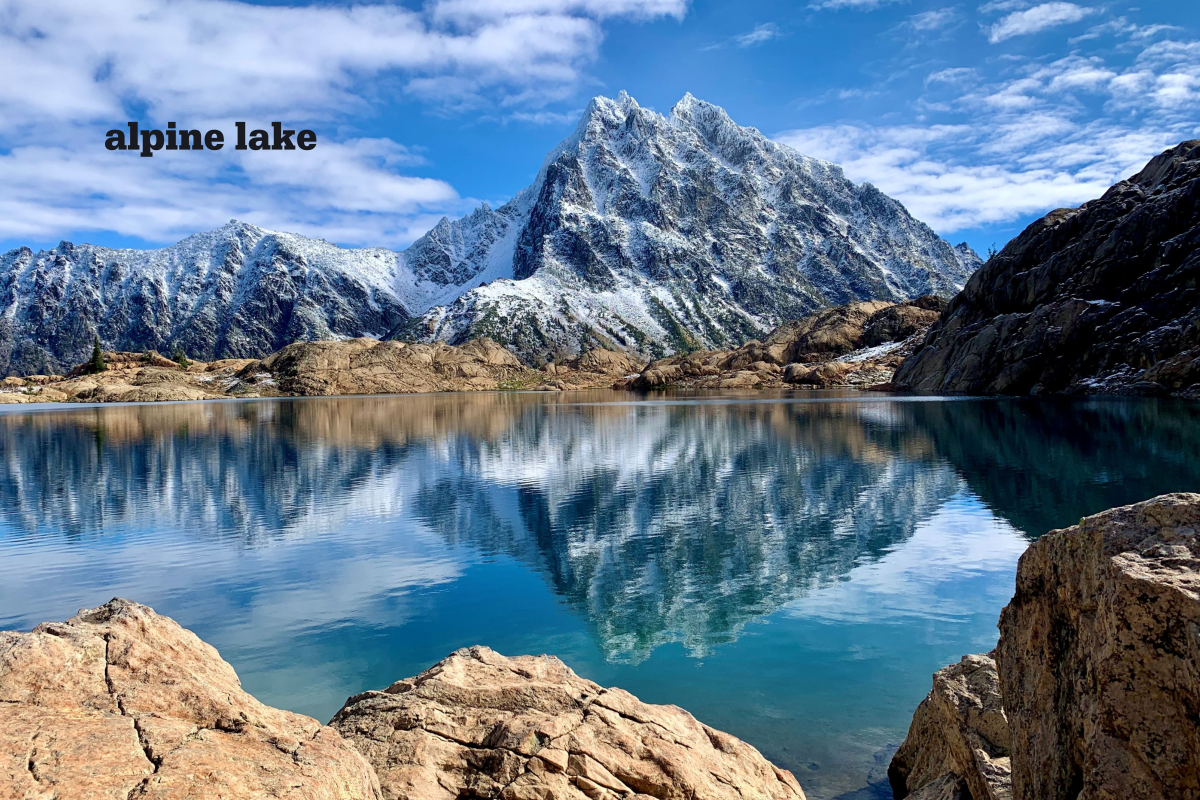
Photo by Andre Ranieri.
Black bear: Washington has few grizzly bears, but it has plenty of black bears. Black bears tend to be a little skittish, and — though they are omnivores — they typically eat mostly plants and berries in the spring and summer. Remember to store your food appropriately so bears don’t get into it when you’re out hiking!
Berry: Join in the beary-berry fun by foraging your own berries on your hikes in the right season — blueberries, huckleberries and salmonberries await!
Coulee: Coulees are flat-ish valleys — in Eastern Washington, these coulees were formed by the Ice Age Floods. These days, they make for very interesting and unique hikes — some favorites include Ancient Lakes and Frenchman Coulee.
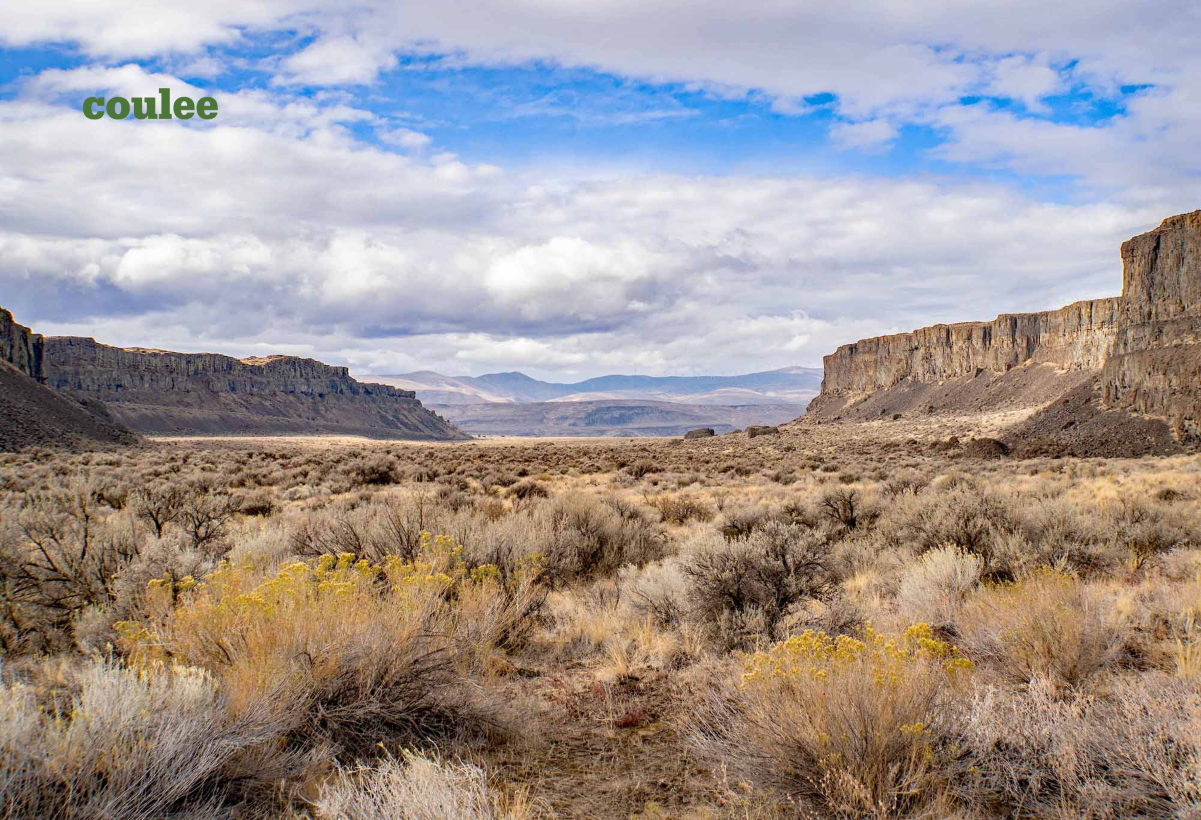 Photo by David Hagen.
Photo by David Hagen.
Discover Pass: If you’re planning to hike on any state-managed lands — that’s any land owned by Washington State Parks, the Washington Department of Fish and Wildlife and the Washington Department of Natural Resources — you’ll want to get your hands on an annual Discover Pass.
Desert: Many people don’t immediately think of the desert when they think of Washington, but half of Washington is exactly that. Explore the beauty of Washington's desert in Eastern Washington with its many sandy and rocky landscapes, wildflowers and wide open fields. And, as an added bonus, many hikes are still doable in the wintertime — just be sure to watch out for rattlesnakes and ticks when it's warm out!
Evergreens: They’re called evergreen trees because they stay forever green, of course. Even in winter, these trees keep all of their needles — not leaves — and they stay green, except in the case of some exceptions (see: larch). Here, you’ll find Douglas fir, western hemlock, Sitka spruce, cedar and plenty of other evergreen trees. After all, Washington is the Evergreen State!
Ecosystem: Washington is home to all sorts of diverse ecosystems. From rainforest to desert, forest to marine, alpine to shrubsteppe — Washington has something to offer everyone who is interested in getting outside, no matter what sort of hike they're looking for.
Falls: Many of Washington’s most famous beautiful spots are waterfalls — think Snoqualmie Falls, Palouse Falls, Colonial Creek Falls (the tallest in the Lower 48 plus Alaska!). And, of course, we’ve got the Cascade Mountain Range, named for its many impressive waterfalls. They’re great for both sunny day and cloudy day hikes, all year-round.
Grouse: Ever hear that thumping sound in the woods that gets faster and faster? That’s probably a male grouse “drumming,” or rapidly beating their wings, a defense and mating behavior.
Glacier: Glaciers are the large ice features you might see on mountains, where falling snow has been compressed over time and "grown" into a large slab of ice. The bigger ones often have names, like the well-known Emmons Glacier on Mount Rainier.
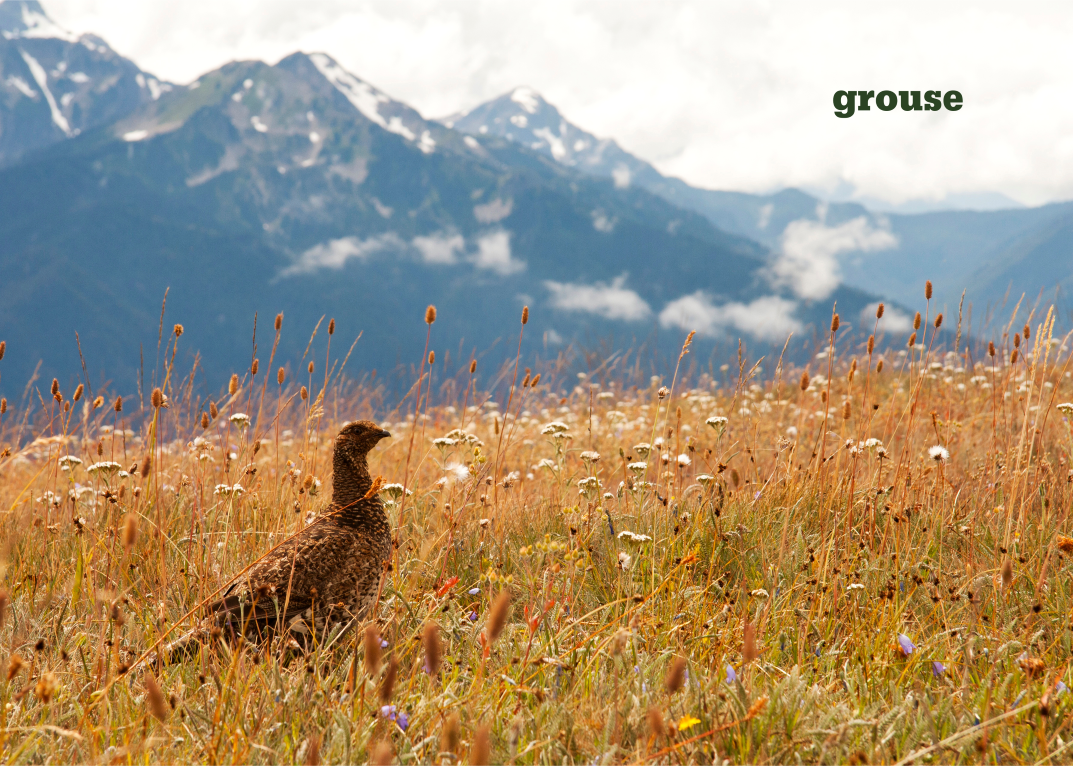
Photo by Tyler Davis.
Hiking Guide: WTA's Hiking Guide has over 4,000 hikes — and it's only getting bigger! It's the most comprehensive database of hikes in Washington, and it's a large community effort to add to and maintain it.
Island: The San Juan Islands, Whidbey Island, Fidalgo Island, Camano Island, Bainbridge Island, Vashon Island… The Salish Sea is home to many island destinations for Washington hikers.
Jay: We’re lucky to have so many interesting birds in Washington, including jays. On your hikes, you might run into deep blue stellar jays or round gray jays. Remember not to feed the birds, even if they are “asking” — enjoy them with your eyes and cameras instead.
Kelp: Walk along one of Washington’s coastal beaches and you’ll probably walk next to or right on top of some washed-up bulbous bull kelp.
Larch: These evergreen-like trees aren’t evergreen — they lose their needles in the winter and they’re known for their golden color before the needles fall. Hikers from all over — including from outside of the Pacific Northwest — travel to the Cascades for annual “larch marches” to catch the larches in the prime golden weeks in early fall.
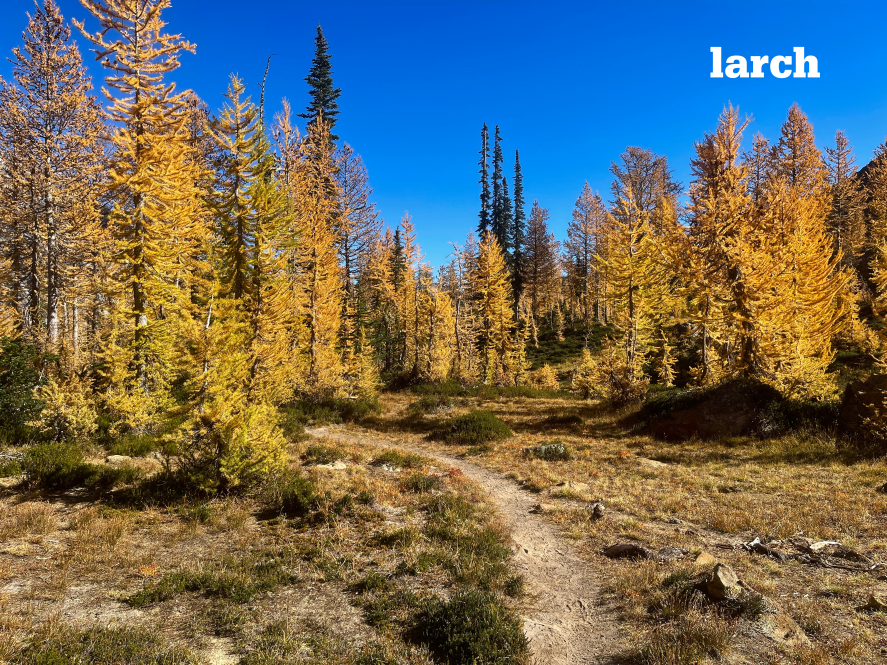
Photo by Laura Follis.
Mountain goat: You’ll be able to find mountain goats perched on some of the most precarious mountainous places, as their special hooves can allow them to scale practically vertical cliffs.
Marmot: When you come across a boulder field on your hike, keep an eye out for these large rodents in the summertime. You might see them lazing around in the sun on a rock. And join WTA's favorite marmot, Miles, every August for his favorite activity: Hike-a-Thon!
Northwest Forest Pass: If you’re planning to hike on any national forest lands, this is the annual parking pass you’ll need. Washington has five national forests: Colville, Gifford Pinchot, Mt. Baker-Snoqualmie, Okanogan Wenatchee and Olympic National Forests. If you also want to hike in Washington’s national parks — Olympic, Mount Rainier and North Cascades — you can get an America the Beautiful pass, which covers all national forests and national parks for the year!
Otter: Keep an eye out for playful otters when out on beach hikes. If you’re lucky, you may get to see one floating on its back or a whole family of them sunbathing on a rock.
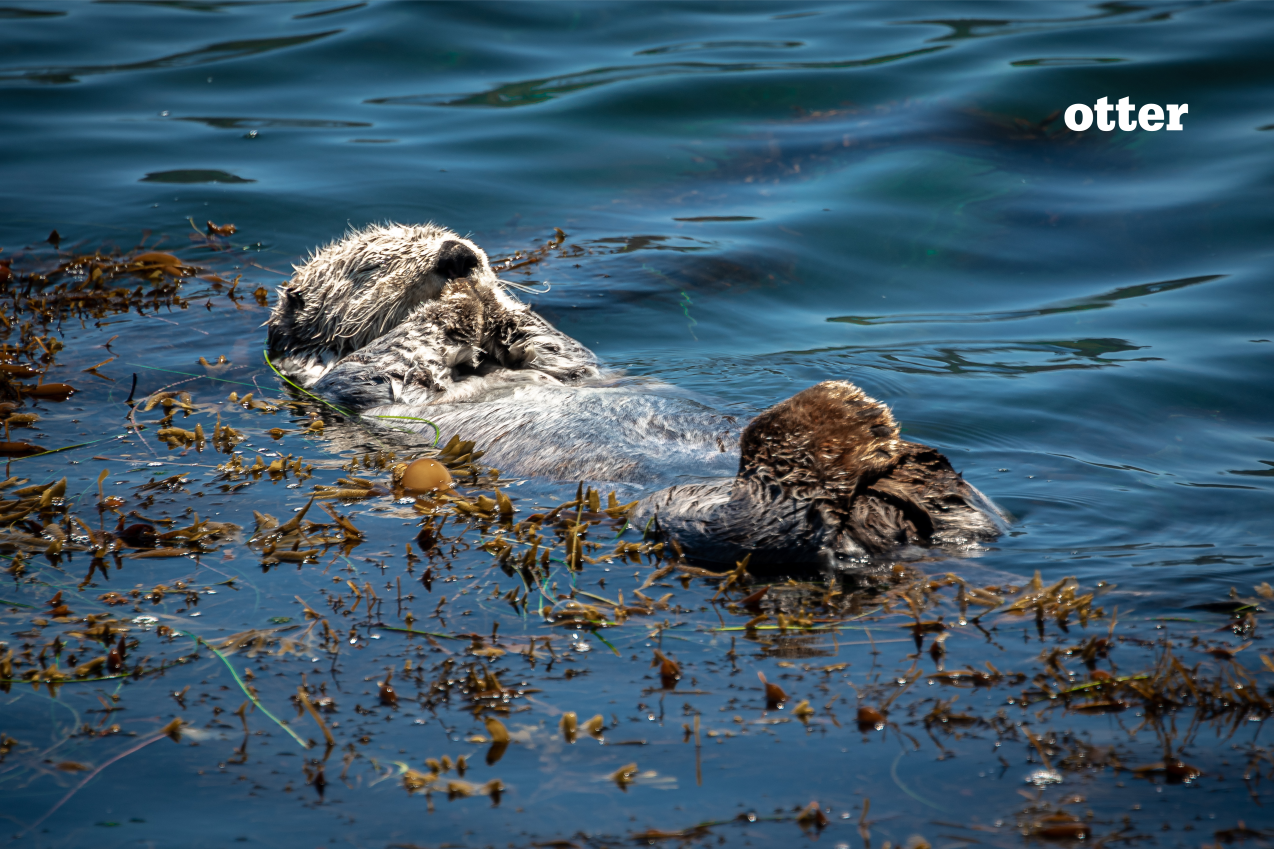
Photo by Andrew Koehn.
Pika: When you’re on or around a talus, keep quiet and try to listen for the little squeaks of pikas nearby. If you’re very still, you might be able to catch a glimpse of one before it burrows back under a rock.
Quail: There are two types of these birds with a signature feather plume atop their heads in Washington — the valley quail (also known as the California quail) and the much rarer mountain quail.
River: We’ve got beautiful rivers all over the state, and many of them make for great hikes. They’re often great options for the wintertime — when snow covers higher-elevation hikes — and for rainy days — when big views are off the table.
Sea stack: Off the shores of the Olympic Coast, the horizon is dotted with tall rocks known as sea stacks, formed by waves causing the weaker parts of large rocks to erode. Eventually, only these sea stacks remain. Check out some of the most stunning sea stacks sunsets at Shi Shi Beach, Rialto Beach, Ruby Beach and many others on the ocean coast.
Spit: One of the coolest ways to explore the coast is by way of a spit hike — a spit is a long, narrow landform that extends into the water from the shore. Some Washington favorites include Dungeness Spit and Semiahmoo Spit.
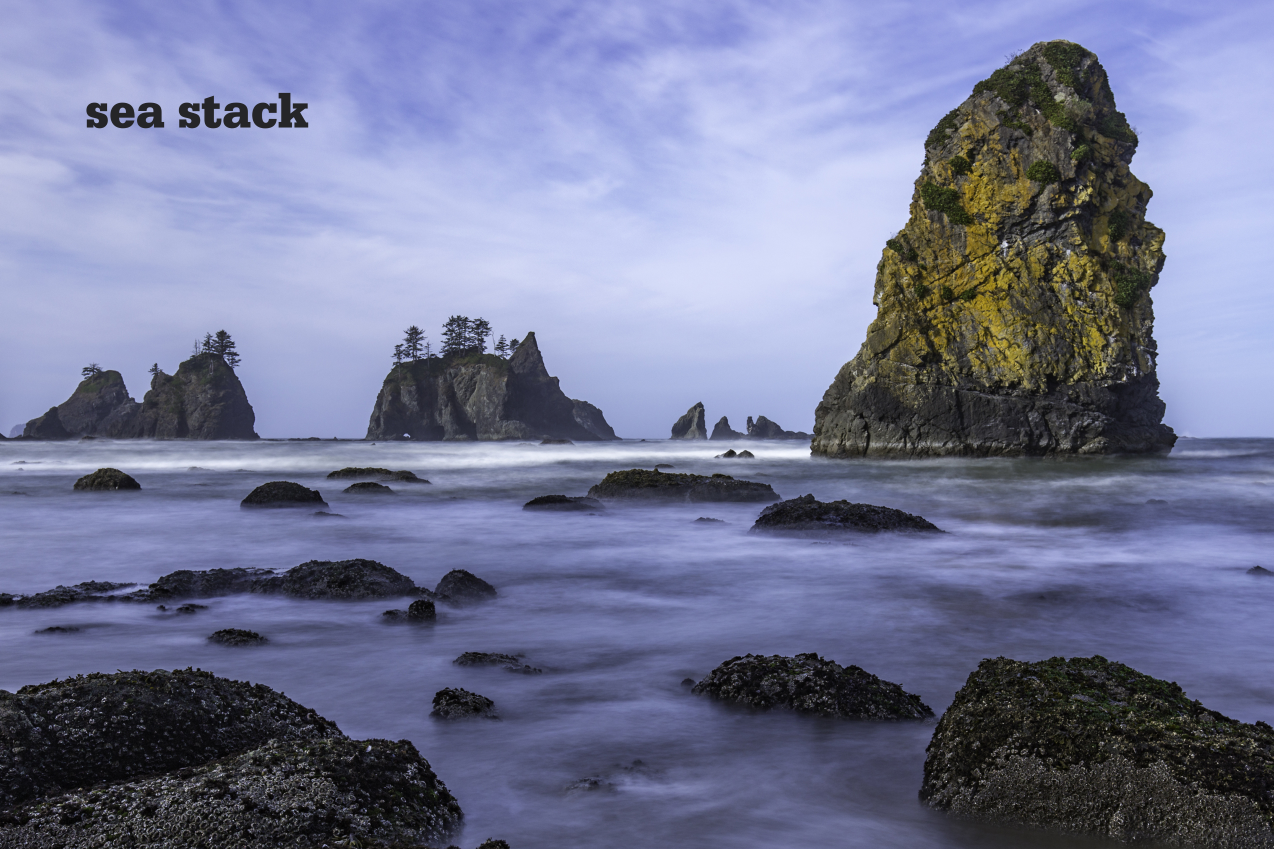
Photo by Charlie Rose.
Ten Essentials: Whether you're hiking in Washington or not, make sure you always have your Ten Essentials. It's important to stay safe on your hike, and the Ten Essentials is, well ... essential!
Trip reports: One of the most useful features of the WTA Hiking Guide is user-submitted trip reports. Written by hikers just like you, they offer important information about where folks are hiking, current trail and road conditions and other up-to-date interesting information about hikes.
Urban hiking: Washington is lucky to have so many urban green spaces that provide communities quick and easy access to quality time spent outdoors. WTA’s Trail Next Door campaign is our commitment to creating more of these areas and maintain the ones we already have to make it even easier for local communities to get outside.
Volcano: Washingtonians are no strangers to volcanoes. Depending on where you’re at in the state, you’ll likely have views of one of Washington’s five active volcanoes: Mount Rainier, Mount Adams, Glacier Peak, Mount Baker and Mount St. Helens. And if you’re near the Washington-Oregon border, you might catch views of Mount Hood and Mount Jefferson too!
Wildflower: In the spring and summer, hikers can find all sorts of wildflowers all across Washington. Some favorites include beargrass, bleeding heart, balsamroot, queen’s cup and yarrow – which doubles as a great natural pest repellant.
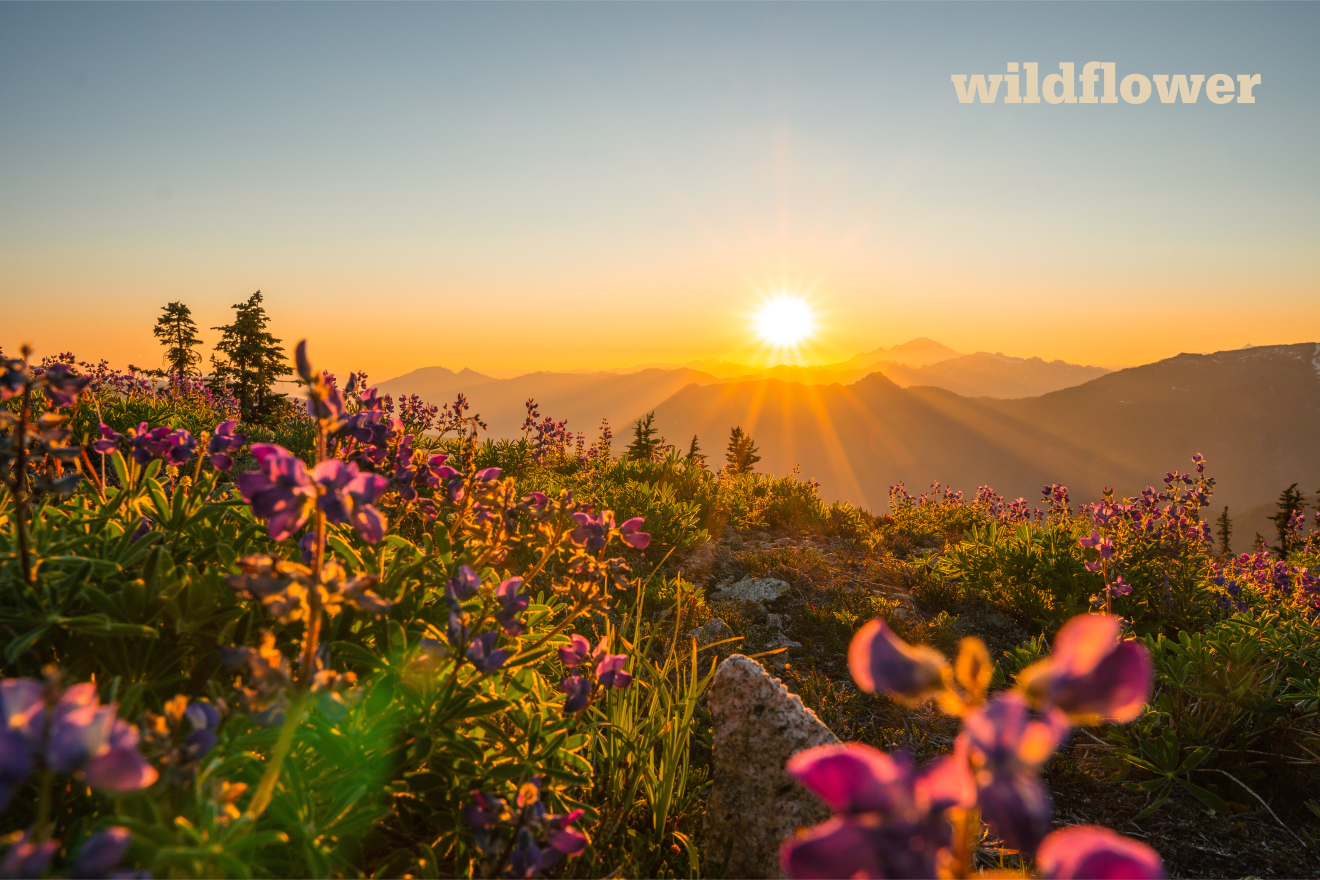
Photo by Dustin Kuromiya-Parker.
X-cut (crosscut): Washington is famous for its beautiful trees (see: evergreen, larch), but that also means that every spring, our trails are often difficult to hike due to fallen trees from the previous winter. A great tool to use to clear a trail is a crosscut saw, a giant saw that can be used by either one or two people.
Year-round adventuring: There's no off-season for hiking in Washington! In the wintertime, hikers slap on snowshoes or cross-country skis and head out on our state's many wonderful winter wonderland hikes. In the spring, wildflower-seekers take to the trails that have started melting out. And in the fall, folks take advantage of the cooling temps to check out fall foliage (see: larch) and hit up their favorite trails before the snow starts to fall.
Zipper: When hiking and backpacking in Washington, expect to use many zippers — on your backpacks, raincoats and rain pants, jackets, sleeping bags, tents ... Washington’s weather changes dramatically depending on the time of year and elevation you’re at, so make sure you’re prepared with the right gear — and make sure to zip up when it’s cold out!